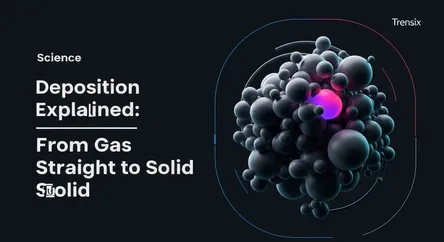Science
Deposition Explained: From Gas Straight to Solid

Discover deposition, the process where a gas turns directly into a solid, and its vital role in nature and advanced technological manufacturing.
What is it?
Deposition is a thermodynamic phase transition in which a substance in a gaseous state changes directly into a solid, bypassing the intermediate liquid phase. It is the reverse process of sublimation. For deposition to occur, energy must be removed from the gas, causing its molecules to lose energy and lock into a solid structure. Common natural examples include the formation of frost on cold surfaces, where water vapor in the air turns directly into ice crystals without first becoming liquid water. Another example is the formation of snowflakes high in the atmosphere. This process is an exothermic phase change, meaning it releases energy as the solid forms.
Why is it trending?
The concept of deposition is trending due to its critical applications in advanced manufacturing and materials science. Techniques like Physical Vapor Deposition (PVD) and Chemical Vapor Deposition (CVD) are fundamental to modern technology. These industrial processes allow for the creation of extremely thin, high-performance films and coatings on various materials. This technology is essential in the production of semiconductors for electronics, creating wear-resistant coatings for tools, and manufacturing more efficient solar cells and anti-reflective lenses. As technology becomes smaller and more powerful, the precision offered by deposition techniques becomes increasingly indispensable.
How does it affect people?
Deposition processes directly impact daily life through the technology we use. The microchips in smartphones and computers, the performance of solar panels, and the durability of medical implants all rely on thin films applied through deposition. It enables the creation of materials with specific properties, such as enhanced strength or electrical conductivity. For example, titanium nitride coatings on tools prevent wear, and specialized coatings on glass can conserve energy in buildings. Essentially, this fundamental process of matter transformation is a key driver of innovation, leading to better, more efficient, and longer-lasting products.